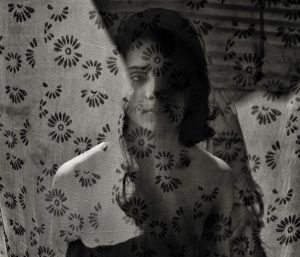Shahria Sharmin in lensculture:
“I feel like a mermaid. My body tells me that I am a man but my soul tells me that I am a woman. I am like a flower, a flower that is made of paper. I shall always be loved from a distance, never to be touched and no smell to fall in love with.”
—Heena, 51, Dhaka, Bangladesh, 2012
 “Hijra,” a term of South Asia which have no exact match in the modern Western taxonomy of gender, designated as male at birth with feminine gender identity and eventually adopts feminine gender roles. They are often grossly labeled as hermaphrodites, eunuchs, transgender or transsexual women in literature. presently a more justified social term for them is the “Third Gender.” Transcending the biological definition, hijras are a social phenomena as a minority group and have a long recorded history in South Asia. However, their overall social acceptance and present conditions of living vary significantly in countries from Bangladesh, India and Pakistan. Perhaps the Hijras in Bangladesh face the worst situation, which forces a good number of them to leave their motherland and migrate to India. Instead of coming from various social and family backgrounds, Hijras feel the strongest sense of belonging with their own group—fellow Hijra. These groups give them the shelter of a family and the warmth of human relationship. Outside the group, they are discriminated and scorned almost everywhere. Traditionally, these individuals earned their living based on the cultural belief that Hijras can bless one’s house with prosperity and fertility. Because of the shared geographical and cultural history of the subcontinent, this particular Hindu belief slowly made room in the Muslim culture of this land. Times have changed and Hijras have lost their admired space in the society. Now they make a living by walking around the streets collecting money from shopkeepers, bus and train passengers or through prostitution.
“Hijra,” a term of South Asia which have no exact match in the modern Western taxonomy of gender, designated as male at birth with feminine gender identity and eventually adopts feminine gender roles. They are often grossly labeled as hermaphrodites, eunuchs, transgender or transsexual women in literature. presently a more justified social term for them is the “Third Gender.” Transcending the biological definition, hijras are a social phenomena as a minority group and have a long recorded history in South Asia. However, their overall social acceptance and present conditions of living vary significantly in countries from Bangladesh, India and Pakistan. Perhaps the Hijras in Bangladesh face the worst situation, which forces a good number of them to leave their motherland and migrate to India. Instead of coming from various social and family backgrounds, Hijras feel the strongest sense of belonging with their own group—fellow Hijra. These groups give them the shelter of a family and the warmth of human relationship. Outside the group, they are discriminated and scorned almost everywhere. Traditionally, these individuals earned their living based on the cultural belief that Hijras can bless one’s house with prosperity and fertility. Because of the shared geographical and cultural history of the subcontinent, this particular Hindu belief slowly made room in the Muslim culture of this land. Times have changed and Hijras have lost their admired space in the society. Now they make a living by walking around the streets collecting money from shopkeepers, bus and train passengers or through prostitution.
I, like almost everyone else in my society, grew up seeing them as less than human. Their habits, way of life, and even looks marked them as different and deviant, as if a living testimony of biological aberration. Then I met Heena, who showed me how wrong I was. She opened her life to me, made me a part of her world and helped me to see something beyond the word “Hijra.” She made me understand her and other members of her community, as the mothers, daughters, friends and lovers that they actually are.
More here.
